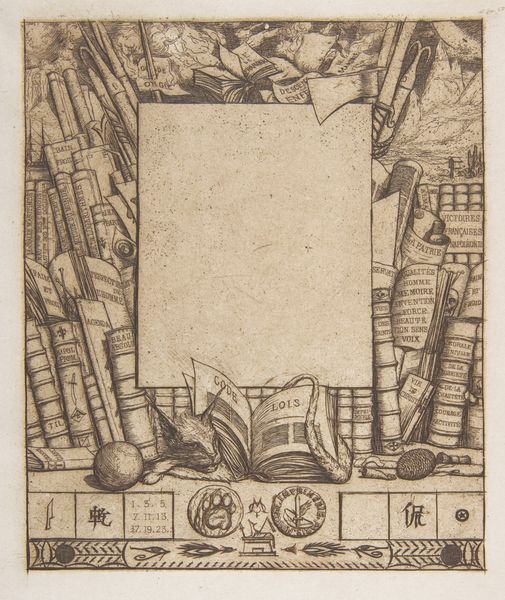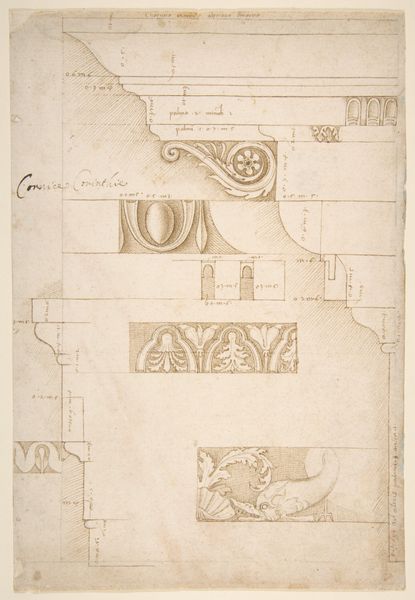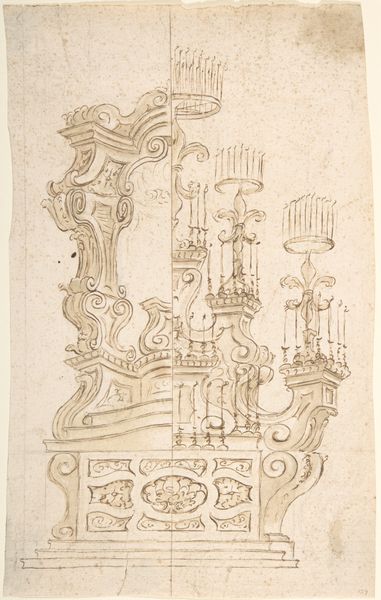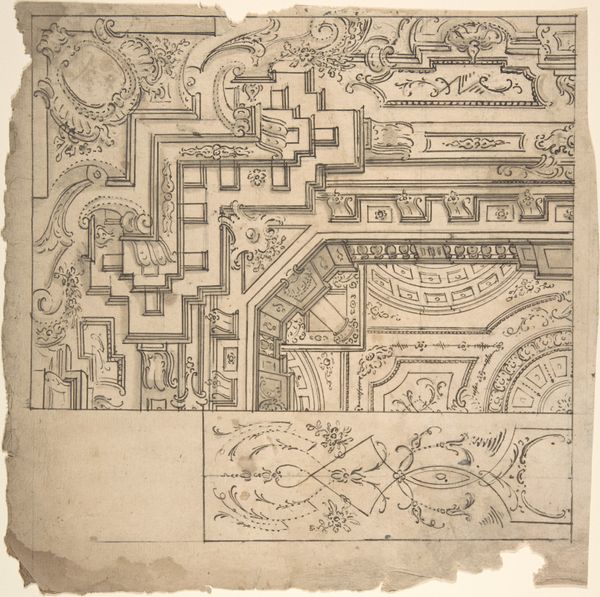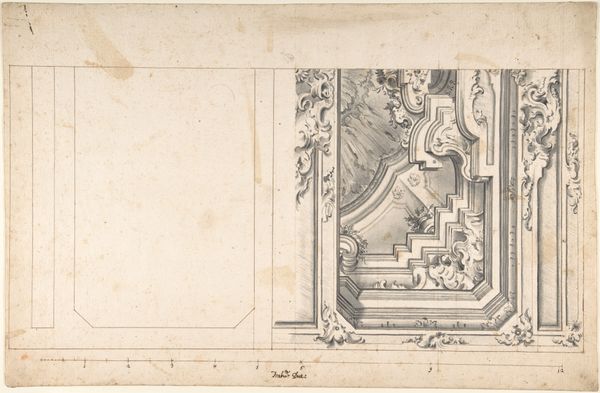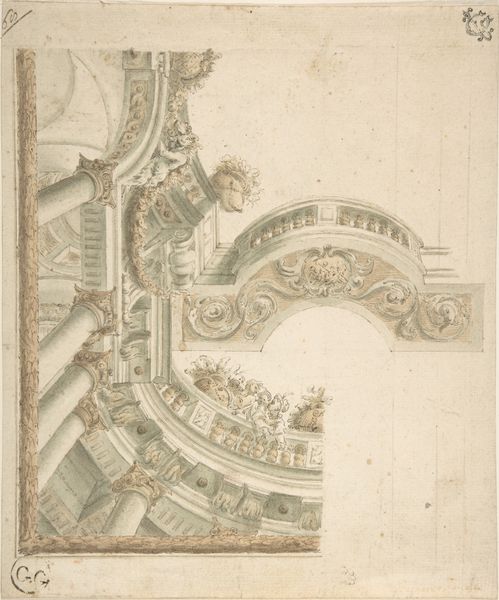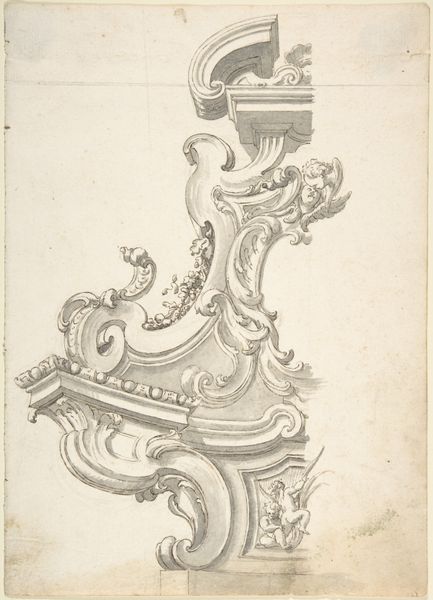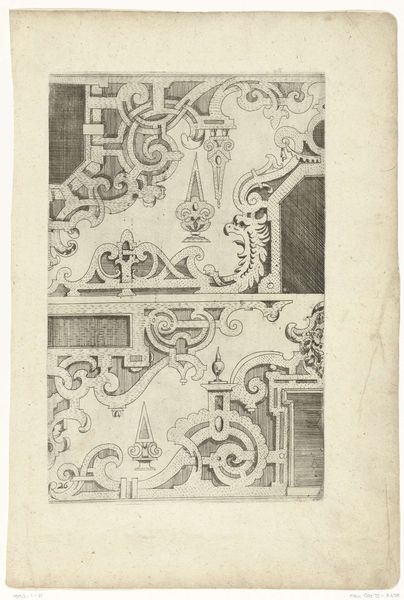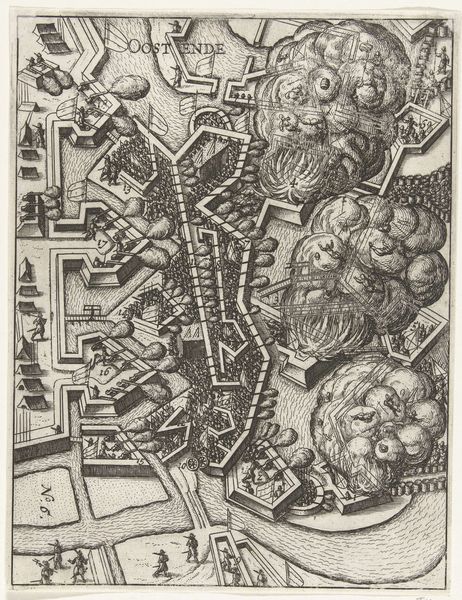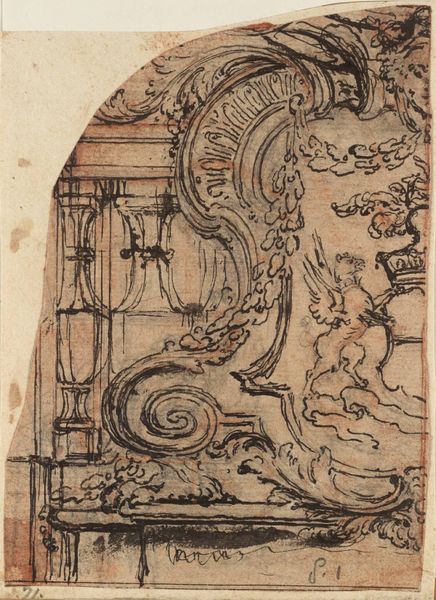
drawing, print, engraving
#
drawing
#
pen drawing
# print
#
pen sketch
#
form
#
11_renaissance
#
geometric
#
pen-ink sketch
#
line
#
engraving
Dimensions: Sheet: 8 1/4 x 4 1/8 in. (21 x 10.4 cm)
Copyright: Public Domain
Curator: Look at this fascinating print titled "Right Half of a Strapwork Cartouche," created anonymously sometime between 1500 and 1600. Editor: Intriguing! It's so architectural, yet feels incomplete. Like a fragment of a grand design, rendered with meticulous detail. It reminds me of blueprints or preliminary sketches for something monumental. Curator: Exactly! Cartouches like these were extremely popular as decorative elements during the Renaissance, gracing buildings, furniture, even books. The level of ornamentation was a demonstration of patronage. Editor: Absolutely, and it speaks to a particular aesthetic, doesn't it? We see this constant interplay of classical motifs and almost grotesque imagery—that face at the top, and then the satyr-like creature at the bottom, intertwined with foliage. It feels both celebratory and slightly unnerving. Curator: The grotesque elements are often related to secular symbols and humanistic views prevalent in Europe. Strapwork itself, with those interlacing bands, can be seen as a rejection of gothic ornamentation in favor of classical influences. These would have been influential motifs, found often in published collections of ornaments aimed at architects, artists and craftsmen who all adapted those models to local preferences. Editor: Thinking of their symbolic language, does this fusion—the organic with the geometric, the divine with the bestial—represent an attempt to reconcile humanity's dual nature? A reflection on the tension between order and chaos? Curator: Perhaps, though I think it's also just that the artisan has limited options on some aspects based on market considerations. But in my view it's also true these complex motifs would have certainly been carefully chosen by wealthy patrons, who would have found these displays an ideal way to establish credibility within powerful social networks. Editor: It certainly provides insights into the past aesthetic and ideology. Looking at it this way offers up a richer understanding of what this image may communicate about a given society's relationship to order and status. Curator: I agree entirely. Seeing beyond the linear quality opens new vistas on our understanding of 16th-century art and culture.
Comments
No comments
Be the first to comment and join the conversation on the ultimate creative platform.

